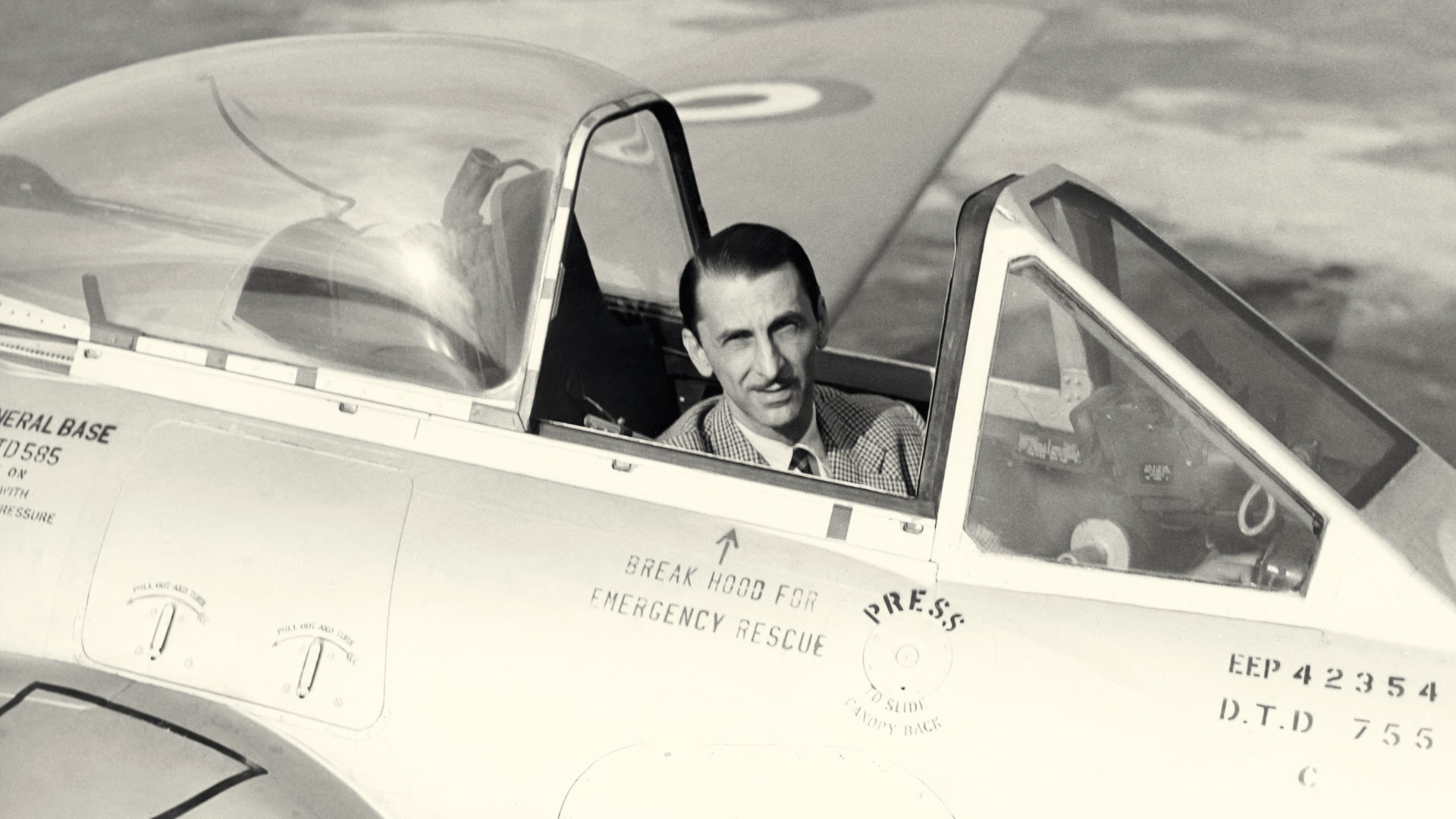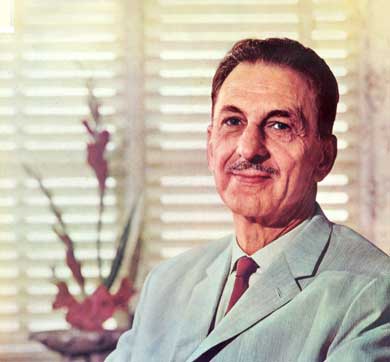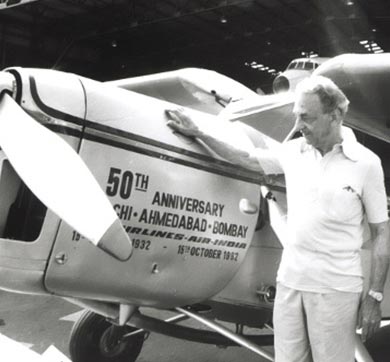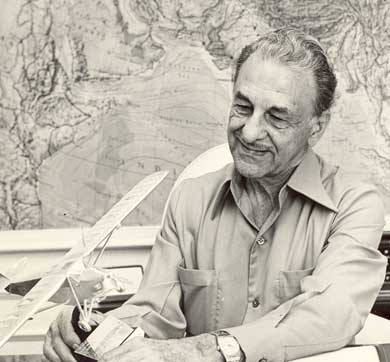July 2023 | 1170 words | 5-minute read
JRD Tata said to the Rotary Club, Bombay, one hundred days after inaugurating the first air service in India: ‘I want to express, perhaps unnecessarily, the unbounded confidence we have in the ultimate future of air transport in India. A few lean years will precede the great development that must come but that has always been so with any new enterprise and in the case of air transport, more perhaps than in any other, the difficulties are worth conquering.
We look forward confidently to the day when none of you will think of travelling or sending your letters by any other way than by air, and when this time comes, if we have done our bit in helping India to make up for lost time, and to attain a position in aviation worthy of her, we shall have achieved our purpose and we shall be satisfied.’
At first 15 September 1932 was scheduled for the inauguration of the Tata Aviation Service. But the monsoon that year was heavy and the mudflats at Juhu airfield were under water. So, the date was postponed by a month. On the morning of 15 October 1932 there was a small crowd in attendance at Drigh Road airport, in Karachi. JRD was clad in long white trousers and a short-sleeved white shirt. He was armed with only a pair of goggles and a slide rule that he always carried on flights. To give him a send-off came the Chief Officer of the Karachi Municipality, the Postmaster of Karachi and a few others. JRD shook hands with all present and punctually at 6.30 a.m. the plane took off with the mail. The Statesman reported on 16 October 1932 that:
‘The small party at the aerodrome gave ‘a cheering send-off to the handsome and nicely got up Moth plane and its pilot.’ A couple of minutes earlier another small plane had taken off to give ‘a fine salute to the new plane and its pilot.’
Speaking about this episode years later JRD was to say: ‘On an exciting October dawn in 1932, a Puss Moth and I soared joyfully from Karachi with our first precious load of mail, on an inaugural flight to Bombay. As we hummed towards our destination at a “dazzling” hundred miles an hour, I breathed a silent prayer for the success of our venture and for the safety of those who would work for it. We were a small team in those days. We shared successes and failures, the joys and heartaches, as together we built up the enterprise which later was to blossom into Air-India and Air-India International.’
"We were a small team in those days. We shared successes and failures, the joys and heartaches, as together we built up the enterprise which later was to blossom into Air-India and Air-India International."
The flight was actually bumpy and hot. JRD said on arrival, ‘I had a delightful flight from Karachi to Bombay despite head winds all along the route, until I reached Ahmedabad. The result was that although my Puss Moth plane has a cruising speed of 100 miles an hour I was able to achieve maximum speed of only 90 to 92 miles per hour.’ He touched down in Bombay at 1.50 pm.
At Ahmedabad the plane was refuelled by Burmah Shell. A bullock cart trundled to the runway and four-gallon cans of petrol were poured into the tank of the little plane.
The only untoward incident in connection with the flight was that a bird flew into the cabin of his machine and JRD had to kill it. On landing in Bombay that afternoon JRD was asked to explain the future working of the service. He replied, ‘I can say this much, that we shall try our best to keep up a regular service and hope the public will support us in our endeavour.’ Among those to receive him at the airport were Thelly, Nevill Vintcent, Nusserwanji Guzder and Sir Phiroze Sethna, one of the senior business figures of Bombay.
The Postmaster of Bombay was of course present to receive the mail—fifty-five pounds of it for Bombay. JRD had already deposited eight pounds in Ahmedabad. Within twenty minutes of JRD’s landing, the mail was transferred to the second waiting Puss Moth. Nevill Vintcent climbed aboard the plane and took off with forty-seven pounds of mail for Madras and six pounds for Bellary—a refuelling halt en route.
‘Those were adventurous days,’ recalls JRD, ‘we had no navigational or landing aids whatsoever on the ground or in the air, and no radio. In fact, we did not even have an aerodrome in Bombay. We used a mud flat at Juhu and the sea was below what we called our airfield, and during the high tide of the monsoon the airfield was at the bottom of the sea! So, we each had to pack up lock, stock and barrel—two planes, three pilots and three mechanics, and transfer ourselves to Poona where we were allowed to use a small field as an aerodrome, appropriately under the shadow of the Yeravada jail!’
The first year of functioning brought Tatas a worthy comment from the Directorate of Civil Aviation. Its report of the year 1933-34 said:
As an example of how an airmail service should be run, we commend the efficiency of Tata Services who on October 10, 1933, arriving at Karachi as usual on time, completed a year’s working with 100% punctuality . . . even during most of the difficult monsoon months when rainstorms increased the perils of the Western Ghats portion of the route no mail from Madras or Bombay missed connection at Karachi nor was the mail delivered late on a single occasion at Madras . . . our esteemed trans-Continental Airways, alias Imperial Airways, might send their staff on deputation to Tatas to see how it is done.
The Tata Air Lines kept expanding. In 1933 it started the Bombay-Calcutta route via Nagpur with Jamshedpur also as a halt. The route was bare of ground facilities or aids and the pilots had still to steer by a simple compass and a look at the ground. In 1935 the Nizam’s territory opened up with a flight to Madras via Hyderabad. The same year Tatas linked Trivandrum via Goa and Cannanore.
But my most exciting and cherished memory of those days was undoubtedly my inaugural flight from Karachi to Bombay, when a dream became a reality.
‘Flying single-engine planes without radio,’ says JRD, ‘is pretty tough during the monsoon. On the other hand, as planes landed slowly in those days, forced landings in emergency in the small fields were possible. We had quite a few of them. I remember one forced landing in 1933 or 1934, between Bombay and Madras, when I spent a couple of hours on the ground, surrounded by wonderfully friendly villagers who had never seen a plane before, and then flying into the night and landing by a quarter moon at Bellary on a small 500-yard toy airfield. As I was very much overdue, and not expected at all that night, I spent the night under the wing of the plane. There wasn’t even a watchman, leave alone a building. But my most exciting and cherished memory of those days was undoubtedly my inaugural flight from Karachi to Bombay, when a dream became a reality.”
Excerpted from Beyond the Last Blue Mountain, a biography of JRD Tata by Russi M Lala, published with permission from Penguin.
All photos courtesy Tata Central Archives.




















